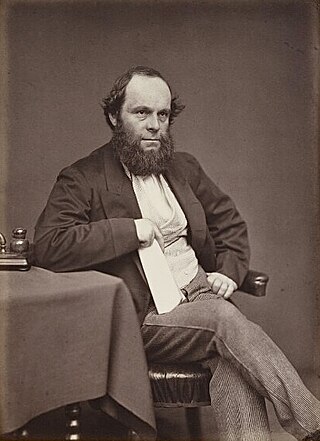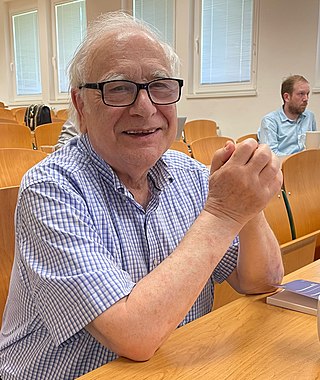Related Research Articles

The Second Viennese School was the group of composers that comprised Arnold Schoenberg and his pupils, particularly Alban Berg and Anton Webern, and close associates in early 20th-century Vienna. Their music was initially characterized by late-Romantic expanded tonality and later, a totally chromatic expressionism without a firm tonal centre, often referred to as atonality; and later still, Schoenberg's serial twelve-tone technique. Adorno said that the twelve-tone method, when it had evolved into maturity, was a "veritable message in a bottle", addressed to an unknown and uncertain future. Though this common development took place, it neither followed a common time-line nor a cooperative path. Likewise, it was not a direct result of Schoenberg's teaching—which, as his various published textbooks demonstrate, was highly traditional and conservative. Schoenberg's textbooks also reveal that the Second Viennese School spawned not from the development of his serial method, but rather from the influence of his creative example.

The Royal College of Art (RCA) is a public research university in London, United Kingdom, with campuses in South Kensington, Battersea and White City. It is the only entirely postgraduate art and design university in the United Kingdom. It offers postgraduate degrees in art and design to students from over 60 countries.

Anselm Feuerbach was a German painter. He was the leading neoclassical painter of the German 19th-century school.

Karl Gerhart "Gert" Fröbe was a German actor. He was known in English-speaking countries for his work as the title character in the James Bond film Goldfinger, as Peachum in The Threepenny Opera, as Baron Bomburst in Chitty Chitty Bang Bang, as Hotzenplotz in The Robber Hotzenplotz, General Dietrich von Choltitz in Is Paris Burning? and Colonel Manfred von Holstein in Those Magnificent Men in Their Flying Machines.

Sir Aston Webb, was a British architect who designed the principal facade of Buckingham Palace and the main building of the Victoria and Albert Museum, among other major works around England, many of them in partnership with Ingress Bell. He was president of the Royal Academy from 1919 to 1924. He was also the founding chairman of the London Society.

The University of Buckingham (UB) is a non-profit private university in Buckingham, England, and the oldest of the country's six private universities. It was founded as the University College at Buckingham (UCB) in 1973, admitting its first students in 1976. It was granted university status by royal charter in 1983.

Sir James Pennethorne was a British architect and planner, particularly associated with buildings and parks in central London.
Friedrich Flick was a German industrialist and convicted Nazi war criminal. After the Second World War, he reconstituted his businesses, becoming the richest person in West Germany, and one of the richest people in the world, at the time of his death in 1972.
The Flick family is a wealthy German family with an industrial empire that formerly embraced holdings in companies involved in coal, steel and a minority holding in Daimler AG.

Richard Plantagenet Campbell Temple-Nugent-Brydges-Chandos-Grenville, 3rd Duke of Buckingham and Chandos,, styled Earl Temple until 1839 and Marquess of Chandos from 1839 to 1861, was a British soldier, politician and administrator of the 19th century. He was a close friend and subordinate of Benjamin Disraeli and served as the secretary of state for the colonies from 1867 to 1868 and governor of Madras from 1875 to 1880.
Friedrich Karl Flick was a German-Austrian industrialist and billionaire.

Prospero Fontana (1512–1597) was a Bolognese painter of late Renaissance and Mannerist art. He is perhaps best known for his frescoes and architectural detailing. The speed in which he completed paintings earned him commissions where he worked with other prominent artists of the period. He was a prominent figure in the city of Bologna, serving as official arbitrator in the business disputes of local artists. In his later career Fontana trained younger painters, including his own daughter Lavinia.
Matthew Slotover is an English publisher and entrepreneur. He co-founded Frieze, a media and events company that has a focus on the art scene and that also produces the annual Frieze Art Fair. in 2021 he co-founded Toklas restaurant, London, and in 2022 he opened Fort Road Hotel, Margate.
The Kensington Proprietary Grammar School, colloquially referred to as the Kensington School, was an educational establishment founded in 1830 that is perhaps best remembered for being one of the founders of the Football Association in 1863.

Onslow Square is a garden square in South Kensington, London, England.

The Absinthe Drinker is an early painting by Édouard Manet, executed c. 1859, considered to be his first major painting and first original work. It is now in the collection of the Ny Carlsberg Glyptotek, in Copenhagen.

Bendor Gerard Robert Grosvenor is a British art historian, writer and former art dealer. He is known for discovering a number of important lost artworks by Old Master artists, including Sir Peter Paul Rubens, Claude Lorrain and Peter Brueghel the Younger. As a dealer he specialised in Old Masters, with a particular interest in Anthony van Dyck.

Park House, at 7–11 Onslow Square, is a detached house in the South Kensington district of the Royal Borough of Kensington and Chelsea in London SW7. It is set in one acre (4,000 m2) of land and is shielded by trees from public view.

Michael Pinto-Duschinsky is a Hungarian-born British scholar, political consultant and writer. The Times called his work "authoritative". Pinto-Duschinsky, who is considered a "prominent author", has written for The Times and other outlets. The Guardian, The BBC, The Times, The Financial Times and the Daily Express have published his views on a number of issues.

The Man of Sorrows is a tempera and oil on panel painting of Jesus Christ by the Florentine artist Sandro Botticelli (1445–1510), thought to have been painted sometime between 1500 and 1510.
References
- ↑ "Fund-raising and the Holocaust: The Case of Dr Gert-Rudolf Flick's Contribution to Oxford University" by Michael Pinto-Duschinsky in Alan Montefiore & David Vines (Eds.) (2005). Integrity in the Public and Private Domains. Routledge. p. 262. ISBN 978-1-134-67938-6.
- ↑ "Vivil A Mueller GmbH & Co KG - Company Profile and News". Bloomberg.com. Retrieved 18 October 2020.
- ↑ de:Vivil
- 1 2 3 4 Daimler-Benz heir wins planning row over 'tasteless' basement plans. Andrew Hough, The Telegraph , 6 February 2013. Retrieved 11 February 2019.
- ↑ Gert-Rudolf Flick - von Beruf Erbe. Christian Keun, Spiegel Online , 2001. Retrieved 11 February 2019.
- ↑ The line of beauty. Brian Sewell, New Statesman , 26 June 2008. Retrieved 11 February 2019.
- 1 2 Professor Gert-Rudolf Flick. University of Buckingham. Retrieved 11 February 2019.
- ↑ Pinto-Duschinsky, p. 228.
- ↑ Pinto-Duschinsky, p. 245.
- ↑ Pinto-Duschinsky, p. 247.
- ↑ Balliol loses its tainted cash. Ros Wynne-Jones, The Independent, 16 April 1996. Retrieved 11 February 2019.
- ↑ "Digging in: Ivy tycoon Richard Caring plans double basement at 'bargain' £40m Kensington mansion", Jonathan Prynn, Homes and Property, 18 December 2018. Retrieved 11 February 2019.